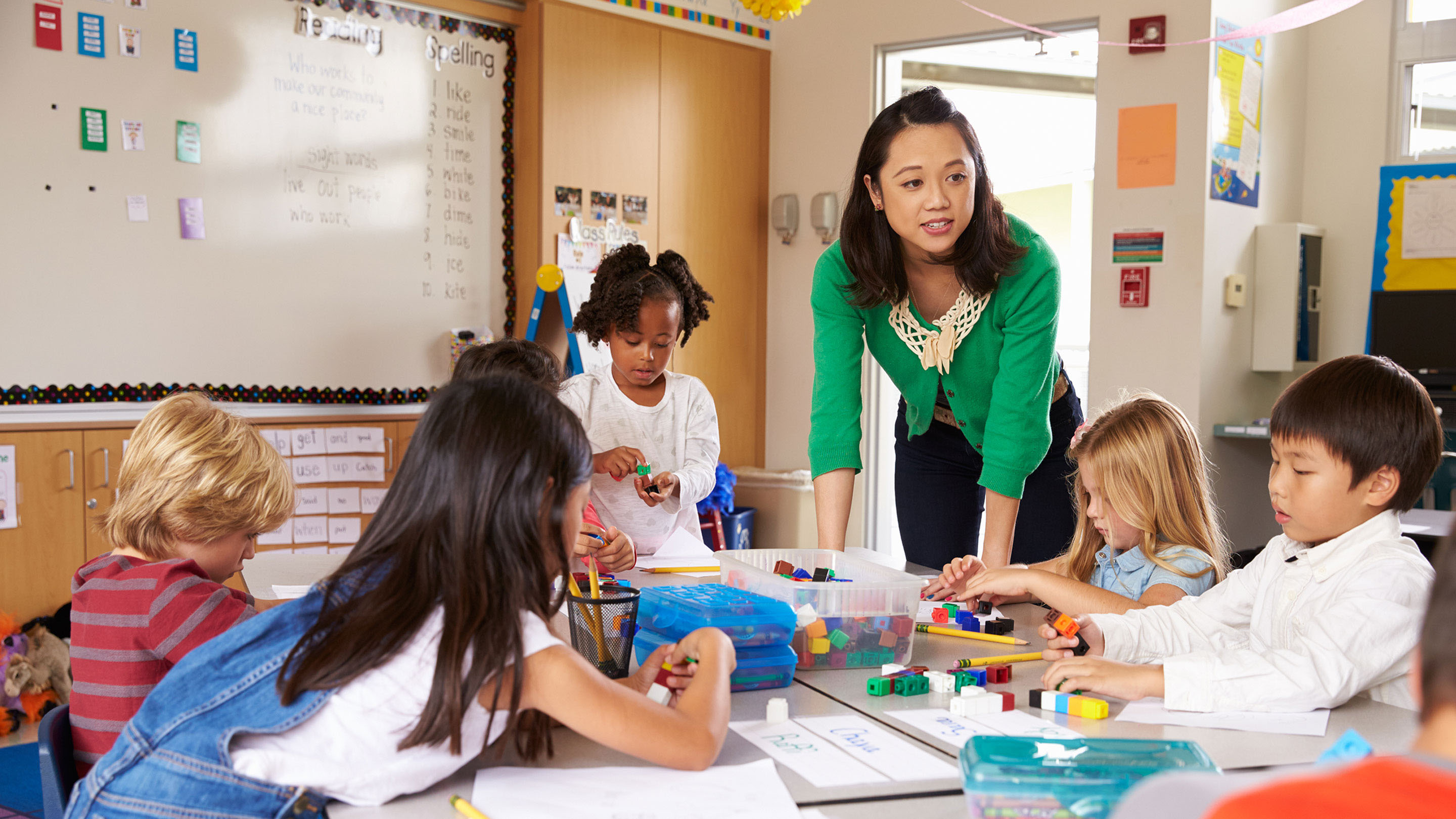Get Top Results with Primary Science Tuition Singapore from Experienced Tutors
Get Top Results with Primary Science Tuition Singapore from Experienced Tutors
Blog Article
A Comprehensive Overview to the Various Learning Methods in Main Scientific Research Guideline
The expedition of varied discovering methods in main science direction provides a chance for teachers to enhance student interaction and understanding significantly. By checking out hands-on discovering strategies, inquiry-based techniques, and joint strategies, we can identify effective methods that cater to various discovering styles. In addition, the assimilation of modern technology and separated instruction plays an important role in promoting an inclusive environment. The question continues to be: just how can these approaches be effectively implemented in the classroom to maximize their influence? The answer depends on a closer analysis of each approach and its implications for teaching science.

Hands-On Knowing Techniques
Hands-on learning strategies play a crucial role in key science guideline, engaging trainees in active expedition and trial and error. These methods enable students to connect straight with sensations and materials, promoting a much deeper understanding of clinical principles. By using manipulatives, versions, and real-life experiments, educators produce an environment where students can observe, assume, and test their ideas.
Such strategies not only boost comprehension however also cultivate critical reasoning and analytic abilities. When students take part in activities like building basic devices, planting seeds, or conducting chemical reactions, they are motivated to ask inquiries and seek answers through their very own monitorings. This experiential technique aids to demystify intricate scientific concepts, making them extra relatable and accessible.
Furthermore, hands-on learning promotes cooperation amongst peers, as pupils commonly operate in teams to conduct experiments or share findings. This teamwork not just enriches their discovering experience yet additionally establishes crucial social abilities. Inevitably, integrating hands-on methods in primary science direction promotes a long-lasting love of discovering and inquisitiveness concerning the environment, laying a strong foundation for future academic quests in scientific research and past.
Inquiry-Based Discovering
Inquiry-based understanding is an instructional strategy that urges trainees to ask concerns, examine phenomena, and create their own understanding of scientific concepts. This approach changes the focus from typical teacher-led guideline to a much more student-centered experience, where learners take the campaign in their educational trip. By fostering inquisitiveness, inquiry-based discovering advertises much deeper interaction with the product, enabling trainees to discover topics in a purposeful context.
In method, this approach usually includes hands-on experiments, monitorings, and critical thinking activities that line up very closely with the scientific technique. Trainees are encouraged to formulate theories, design investigations, and examine data, which cultivates crucial skills such as analytical and problem-solving reasoning. The role of the educator in this framework is to help with expedition, assisting students with the inquiry procedure while encouraging independent idea and cooperation.
Moreover, inquiry-based discovering nurtures a feeling of ownership over the learning procedure, motivating students to pursue expertise actively. This approach not only enhances understanding of scientific ideas but likewise fosters a long-lasting love for learning, outfitting students with the skills required to navigate a significantly complicated globe.
Collaborative Knowing Approaches
Collective discovering methods encourage pupils to involve in significant interactions with peers, cultivating a shared responsibility for their educational end results. In primary science direction, these approaches urge students to interact to check out scientific ideas, fix issues, and conduct experiments (primary science tuition Singapore). By taking part in group activities, pupils can take advantage of diverse perspectives, permitting for richer understanding and retention of scientific knowledge
One key element of collaborative knowing is the focus on interaction abilities. Pupils must articulate their thoughts, listen actively to others, and discuss concepts, all of which are critical expertises in both scholastic and real-world contexts. This social interaction not just enhances their understanding of scientific principles yet additionally promotes team effort and dispute resolution skills.
When pupils see the worth of their payments within a team, they are extra likely to take possession of their learning trip. On the whole, including collective discovering approaches in key scientific research guideline cultivates a vibrant understanding environment that prepares pupils for future scholastic and social challenges.
Innovation Assimilation in Scientific Research
The assimilation of technology in primary science direction improves learning experiences by providing cutting-edge tools and resources that sustain different training methods, including joint knowing - primary science tuition Singapore. The my latest blog post usage of digital systems, simulations, and interactive applications allows students to involve deeply with clinical principles, helping with a more hands-on technique to discovering
Virtual labs, for example, make it possible for students to perform experiments securely and successfully, promoting inquiry-based understanding. These devices can imitate real-world scientific scenarios, allowing students to picture complicated processes that would be tough to replicate in why not check here a conventional classroom setup. Furthermore, technology promotes interaction and partnership amongst trainees, as they can share findings and work with each other on tasks with on the internet platforms.
Furthermore, multimedia presentations and academic video clips can improve lessons by accommodating varied discovering styles, making abstract concepts a lot more easily accessible. Data analysis devices also equip pupils to collect and interpret clinical information, strengthening important assuming skills. Overall, the strategic consolidation of modern technology in key science instruction not only boosts involvement but also prepares trainees for a technically sophisticated culture, equipping them with essential skills for future clinical undertakings.
Set Apart Guideline Strategies
Differentiated guideline techniques are essential for resolving the varied demands of learners in primary science education. These techniques enable teachers to tailor their training techniques to suit varying abilities, interests, and learning styles within the class. By utilizing set apart instruction, educators can develop an inclusive atmosphere that cultivates interaction and enhances understanding of scientific principles.
One effective technique is to make use of adaptable grouping, which enables students to collaborate with peers at comparable ability levels or with differing viewpoints. This technique motivates peer understanding and advertises essential thinking. Furthermore, providing options in tasks can equip trainees, allowing them to select projects that resonate with their rate of interests while still fulfilling curricular objectives.
Additionally, including tiered assignments is another important method. By designing jobs with varying levels of complexity, instructors can guarantee that all students are appropriately challenged, despite their efficiency. Utilizing developmental assessments to gauge comprehending additional enables educators to change their educational methods dynamically, guaranteeing that each student receives the assistance they need.
Ultimately, implementing distinguished direction approaches in main scientific research education not only this link improves pupil discovering end results however also cultivates an enthusiasm for science, preparing pupils for future academic pursuits.

Conclusion
In summary, reliable primary scientific research direction necessitates a diverse method that includes hands-on discovering, inquiry-based approaches, and joint techniques. The combination of innovation and separated guideline better deals with varied understanding designs, promoting an environment conducive to expedition and important thinking. By applying these methods, instructors can boost pupil engagement and comprehension, ultimately supporting a lifelong passion for scientific research and query. Such detailed techniques are important for creating informed and curious future scientists.
The exploration of diverse learning approaches in primary science instruction offers a chance for educators to boost trainee involvement and comprehension substantially.Hands-on understanding strategies play a critical role in primary science instruction, engaging pupils in energetic expedition and testing.Inquiry-based understanding is a training technique that motivates pupils to ask inquiries, explore phenomena, and create their very own understanding of clinical principles.Joint understanding techniques empower trainees to involve in significant interactions with peers, cultivating a shared obligation for their educational results. Overall, integrating collective understanding approaches in primary science instruction grows a dynamic discovering setting that prepares trainees for future academic and social difficulties.
Report this page